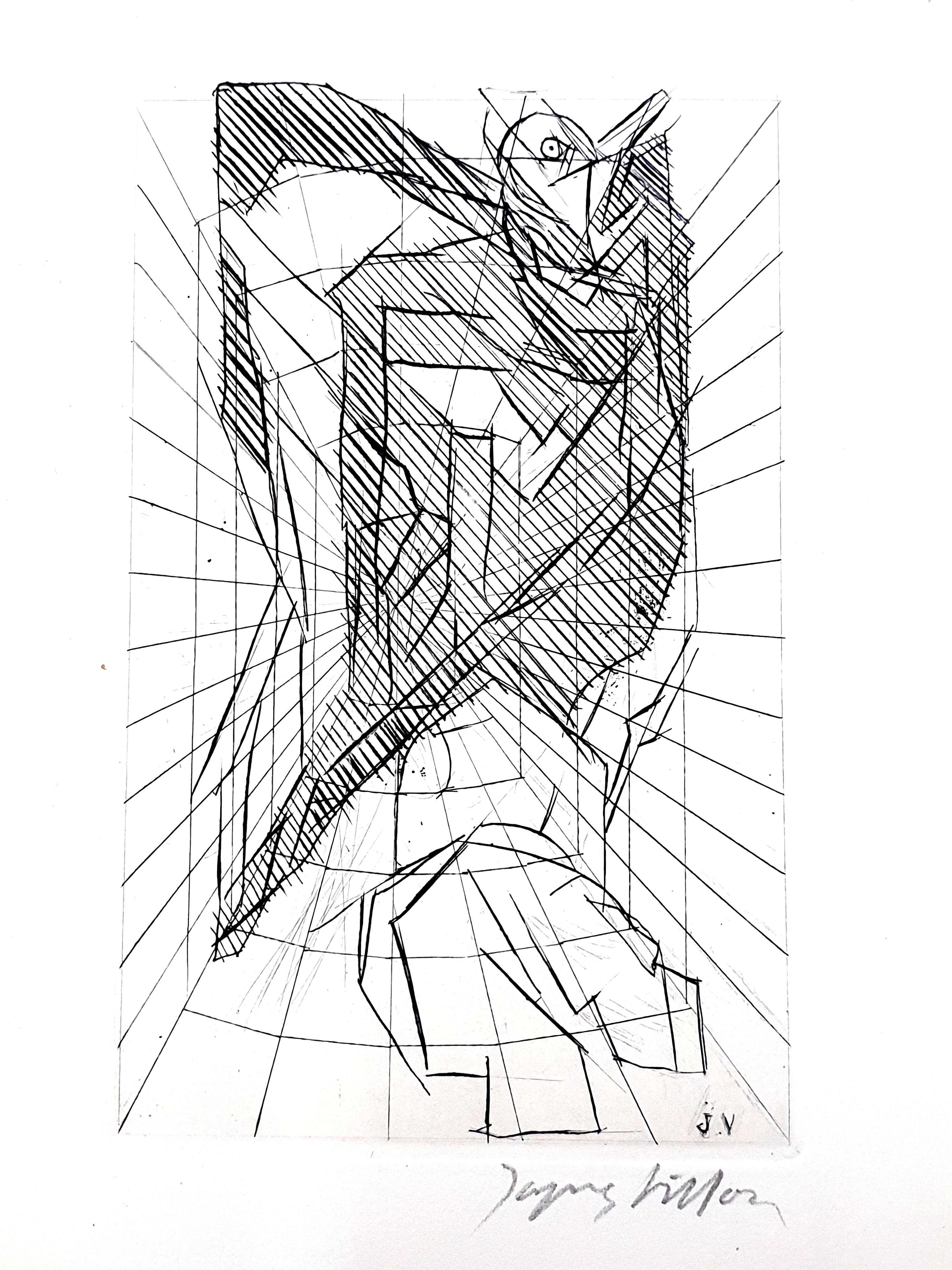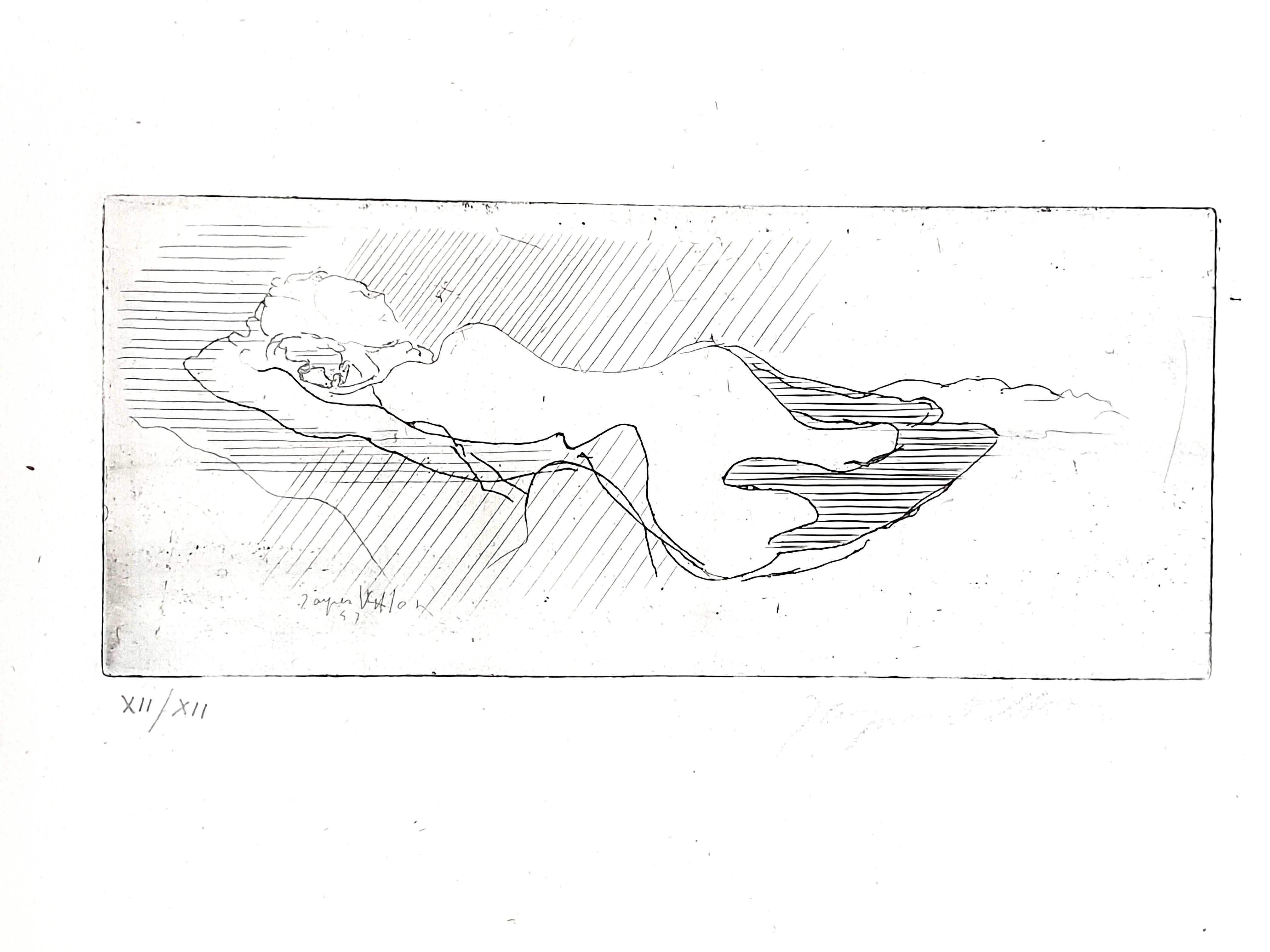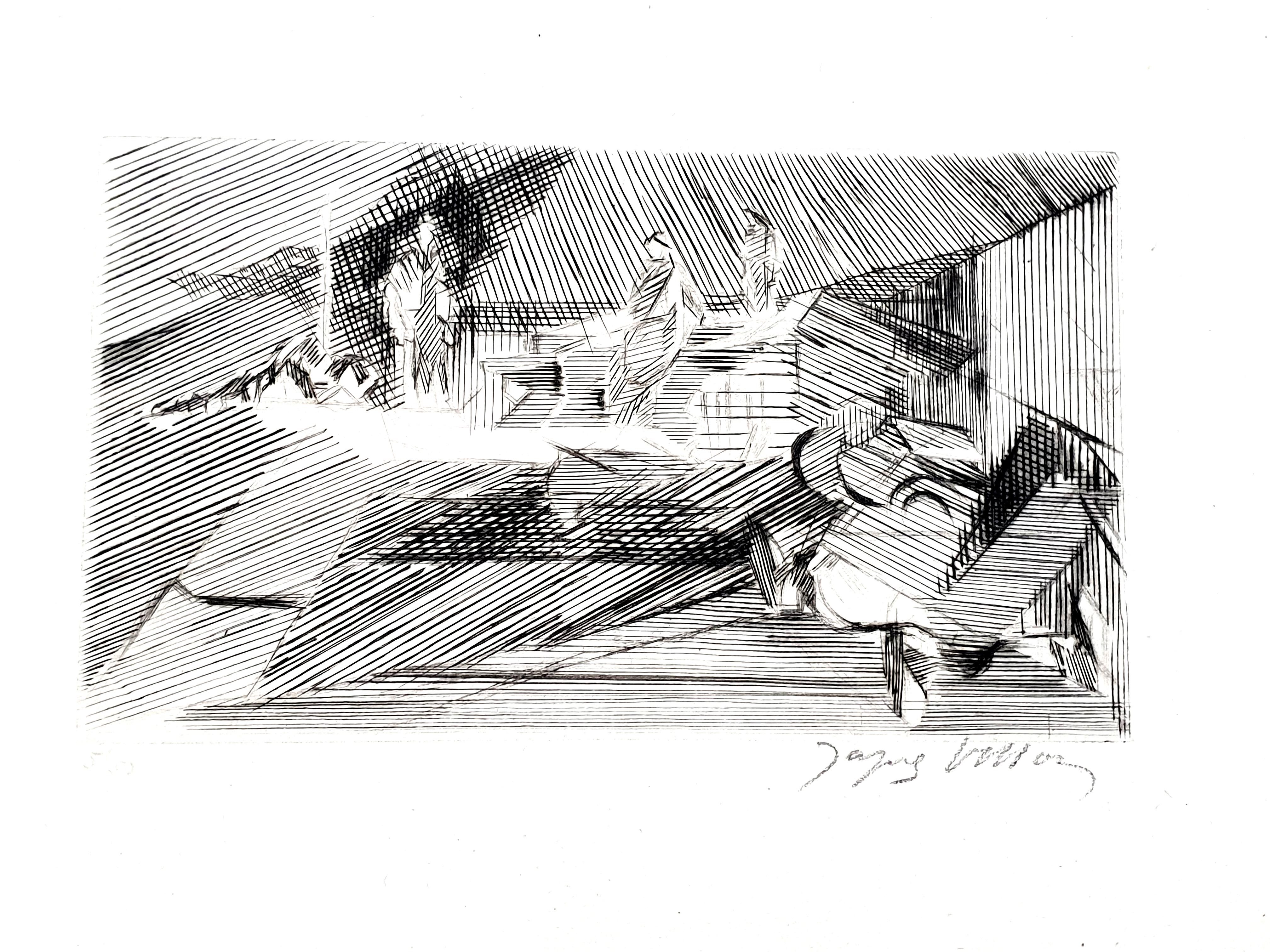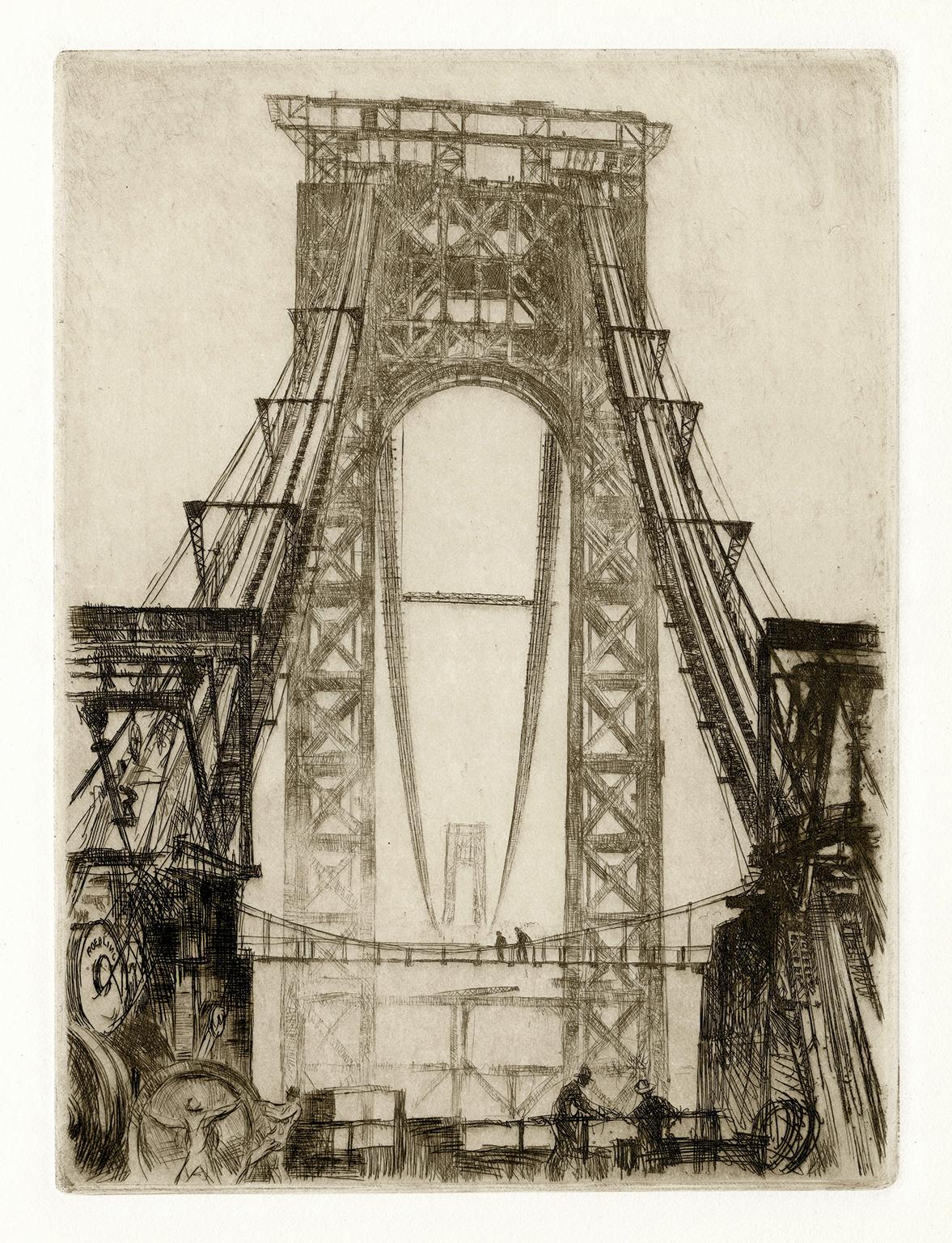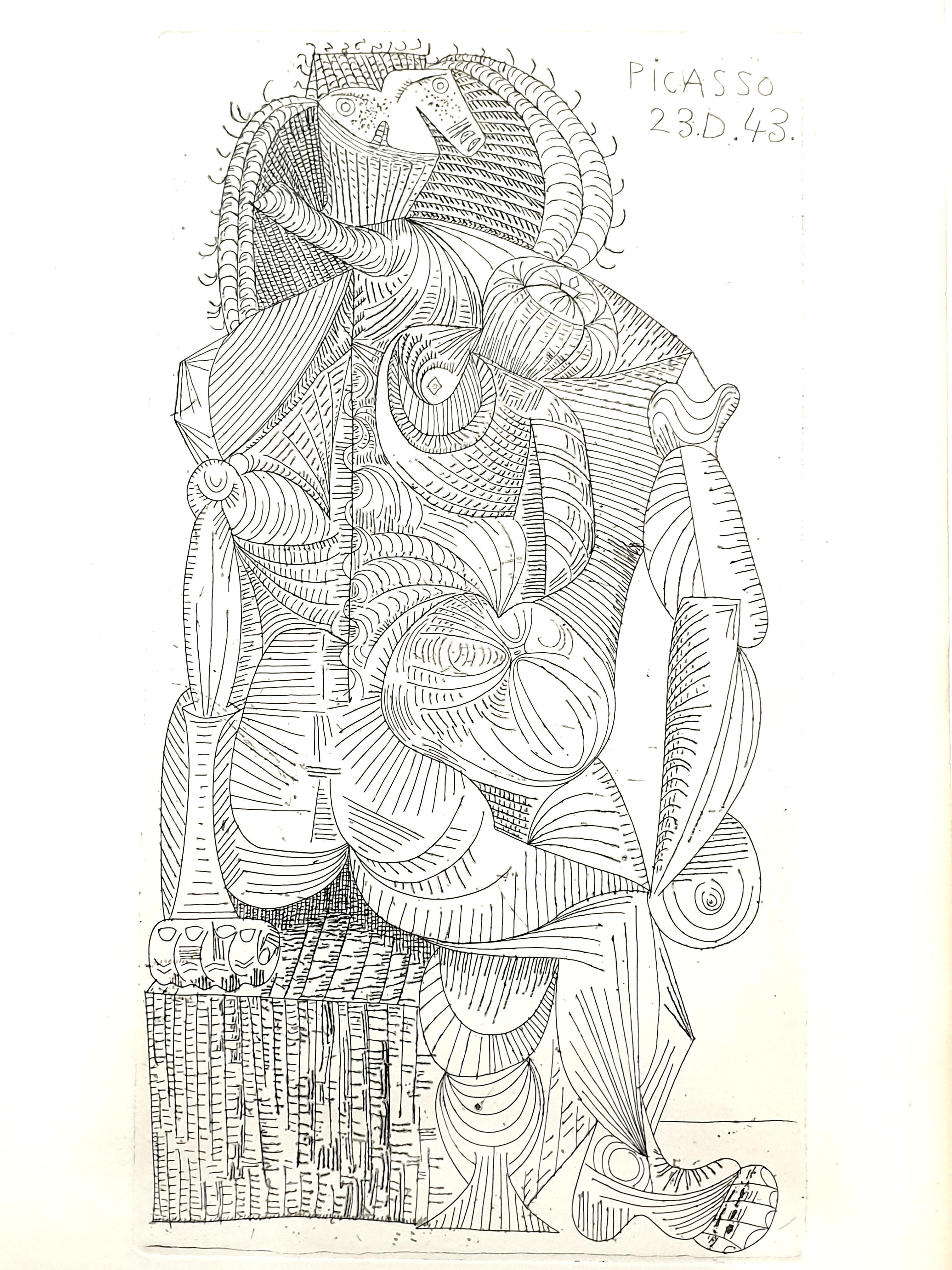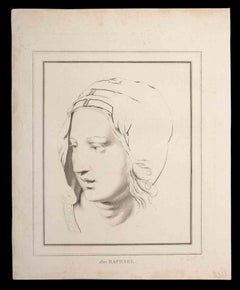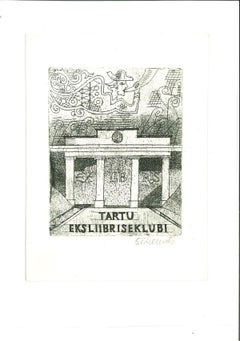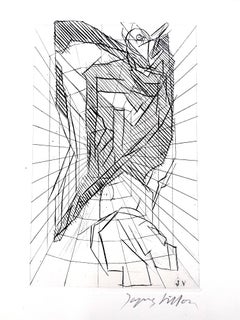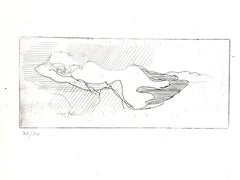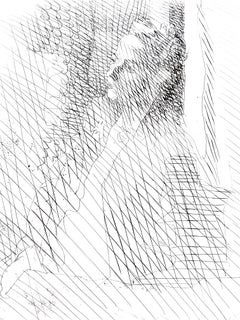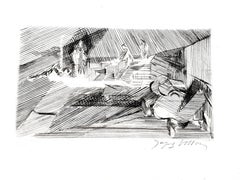Items Similar to Surgical Instruments - Etching by Lorenz Heister - 1750
Want more images or videos?
Request additional images or videos from the seller
1 of 3
Lorenz HeisterSurgical Instruments - Etching by Lorenz Heister - 17501750
1750
About the Item
Surgical Instruments is part of the Suite Institutiones Chirurgicae by Lorenz Heister. Amsterdam, Janssonius-Waesberg, 1750.
Etching on paper.
The work belongs to the Latin edition of the famous work by the founder of modern surgery, first published in 1718.
"His surgery owes its great success to the fact that Heister used the best sources and knew how to give his teachings the anatomical basis everywhere" (Hirsch-Hübotter).
Ref. Hirsch-Hübotter III, 141. Waller I, 4263. See Wellcome III, 237
Good conditions.
- Creator:Lorenz Heister
- Creation Year:1750
- Dimensions:Height: 8.27 in (21 cm)Width: 13.39 in (34 cm)Depth: 0.04 in (1 mm)
- Medium:
- Movement & Style:
- Period:1750-1759
- Framing:Framing Options Available
- Condition:Insurance may be requested by customers as additional service, contact us for more information.
- Gallery Location:Roma, IT
- Reference Number:Seller: T-1424211stDibs: LU650313078542
About the Seller
4.9
Platinum Seller
Premium sellers with a 4.7+ rating and 24-hour response times
1stDibs seller since 2017
7,496 sales on 1stDibs
Typical response time: 2 hours
- ShippingRetrieving quote...Shipping from: Grasse, France
- Return Policy
Authenticity Guarantee
In the unlikely event there’s an issue with an item’s authenticity, contact us within 1 year for a full refund. DetailsMoney-Back Guarantee
If your item is not as described, is damaged in transit, or does not arrive, contact us within 7 days for a full refund. Details24-Hour Cancellation
You have a 24-hour grace period in which to reconsider your purchase, with no questions asked.Vetted Professional Sellers
Our world-class sellers must adhere to strict standards for service and quality, maintaining the integrity of our listings.Price-Match Guarantee
If you find that a seller listed the same item for a lower price elsewhere, we’ll match it.Trusted Global Delivery
Our best-in-class carrier network provides specialized shipping options worldwide, including custom delivery.More From This Seller
View AllPortrait after Raphael - Original Etching by Thomas Holloway - 1810
By Thomas Holloway
Located in Roma, IT
The portrait after Raphael is an original etching artwork realized by Thomas Holloway for Johann Caspar Lavater's "Essays on Physiognomy, Designed to Promote the Knowledge and the Lo...
Category
1810s Modern Figurative Prints
Materials
Etching
Suite de Vases - Original Etching By Jacques François Saly - 1750s
Located in Roma, IT
Suite de Vases is an original artwork realized by the French artist Jacques François Saly (1717-1776)
Etching print. drawing on the back, 1750 c. Passepartout cm 21x22,5
Good cond...
Category
Mid-18th Century Modern Figurative Prints
Materials
Etching
Ex Libris Eklubi - Original Etching - Mid-20th Century
Located in Roma, IT
Ex Libris Eklubi is an original Contemporary Artwork realized in the 20th Century.
Original Ex Libris.
Original B/W Etching on ivory-colored paper. Hand-signed in pencil on the lo...
Category
Mid-20th Century Modern Figurative Prints
Materials
Etching
L'Elevèment - Etching by Dominique Félix - 1870s
Located in Roma, IT
L'Elevèment is an artwork realized by D. Félix in 1870s.
Etching.
Good conditions.
Realized for the "Société des Aquafortistes. Born on the initiative of the publisher Alfred Ca...
Category
1870s Modern Figurative Prints
Materials
Etching
Le Petit Branconnier - Etching by Jacques-Joseph Lecurieux - 1870s
Located in Roma, IT
Le Petit Branconnier is an artwork realized by Jacques-Joseph Lecurieux in the 1870s.
Etching.
Good conditions.
Realized for the "Société des Aquafortistes. Born on the initiativ...
Category
1870s Modern Figurative Prints
Materials
Etching
Environs De Varennes En Argonne - Etching by Alphonse Beaujouint - 1870s
Located in Roma, IT
Environs De Varennes En Argonne is an artwork realized by Alphonse Beaujouint in the 1870s.
Etching.
Good conditions.
Realized for the "Société des Aquafortistes. Born on the ini...
Category
1870s Modern Figurative Prints
Materials
Etching
You May Also Like
Jacques Villon - Cubist Cavern - Original Etching
By Jacques Villon
Located in Collonge Bellerive, Geneve, CH
Jacques Villon - Cubist Cavern - Original Etching
1949
Signed in pencil
Dimensions : 12.5 x 16 cm
Category
1940s Modern Landscape Prints
Materials
Etching
Jacques Villon - Nude - Original Etching
By Jacques Villon
Located in Collonge Bellerive, Geneve, CH
Jacques Villon - Nude - Original Etching
1947
Signed in pencil and numbered
Dimensions : 55.6 x 39.5 cm
Category
1940s Modern Nude Prints
Materials
Etching
Jacques Villon - Woman - Original Etching
By Jacques Villon
Located in Collonge Bellerive, Geneve, CH
Jacques Villon - Woman - Original Etching
Circa 1949
Signed in pencil and numbered
Dimensions : 34.8 x 25 cm
Category
1940s Modern Portrait Prints
Materials
Etching
Jacques Villon - Landscape - Original Etching
By Jacques Villon
Located in Collonge Bellerive, Geneve, CH
Jacques Villon - Landscape - Original Etching
1949
Signed in pencil and numbered
Dimensions : 28 x 38 cm
Category
1940s Modern Landscape Prints
Materials
Etching
'George Washington Bridge (Under Construction)' — 1920s New York City
By Otto Kuhler
Located in Myrtle Beach, SC
Otto Kuhler, 'George Washington Bridge' (under construction) also titled 'The Cables That Hold it All', etching, 1928, edition unknown. An uns...
Category
1920s American Modern Figurative Prints
Materials
Etching
Pablo Picasso - Seated Woman - Original Etching
By Pablo Picasso
Located in Collonge Bellerive, Geneve, CH
Pablo Picasso - Seated Woman - Original Etching
Signed and dated in the plate
1943
Edition: 200
Dimensions: 18.5 x 28 cm
Platemark size : 13.2 x 24.5
Material: LaFuMa paper, watermark on the lower right
Reference: Bloch 362; Baer 689Bb; Cramer 39;
Elliott, Picasso on Paper, National Galleries of Scotland, 2007, illustrated p.84
Pablo Picasso
Picasso is not just a man and his work. Picasso is always a legend, indeed almost a myth. In the public view he has long since been the personification of genius in modern art. Picasso is an idol, one of those rare creatures who act as crucibles in which the diverse and often chaotic phenomena of culture are focussed, who seem to body forth the artistic life of their age in one person. The same thing happens in politics, science, sport. And it happens in art.
Early life
Born in Malaga, Spain, in October of 1881, he was the first child born in the family. His father worked as an artist, and was also a professor at the school of fine arts; he also worked as a curator for the museum in Malaga. Pablo Picasso studied under his father for one year, then went to the Academy of Arts for one year, prior to moving to Paris. In 1901 he went to Paris, which he found as the ideal place to practice new styles, and experiment with a variety of art forms. It was during these initial visits, which he began his work in surrealism and cubism style, which he was the founder of, and created many distinct pieces which were influenced by these art forms.
Updates in style
During his stay in Paris, Pablo Picasso was constantly updating his style; he did work from the blue period, the rose period, African influenced style, to cubism, surrealism, and realism. Not only did he master these styles, he was a pioneer in each of these movements, and influenced the styles to follow throughout the 20th century, from the initial works he created. In addition to the styles he introduced to the art world, he also worked through the many different styles which appeared, while working in Paris. Not only did he continually improve his style, and the works he created, he is well known because of the fact that he had the ability to create in any style which was prominent during the time.
Russian ballet
In 1917, Pablo Picasso joined the Russian Ballet, which toured in Rome; during this time he met Olga Khoklova, who was a ballerina; the couple eventually wed in 1918, upon returning to Paris. The couple eventually separated in 1935; Olga came from nobility, and an upper class lifestyle, while Pablo Picasso led a bohemian lifestyle, which conflicted. Although the couple separated, they remained officially married, until Olga's death, in 1954. In addition to works he created of Olga, many of his later pieces also took a centralized focus on his two other love interests, Marie Theresa Walter and Dora Maar. Pablo Picasso remarried Jacqueline Roque in 1961; the couple remained married until his death 12 years later, in 1973.
Work as a pacifist
Pablo Picasso was a pacifist, and large scale paintings he created, showcased this cry for peace, and change during the time. A 1937 piece he created, after the German bombing of Guernica, was one such influential piece of the time. Not only did this become his most famous piece of art work, but the piece which showed the brutality of war, and death, also made him a prominent political figure of the time. To sell his work, and the message he believed in, art, politics, and eccentricity, were among his main selling points.
Conflicting with social views
Many things Pablo Picasso did during the 1950s, conflicted with the general public. Viciousness towards his children, exaggerated virility towards women, and joining the Communist party, were some of the many scandals which he was involved in during his lifetime. Although most of the things he did were viewed negatively by a minority of the general public, admirers of Pablo Picasso turned a blind eye, and still accepted him as a prominent figure in their society. Following the end of WWII, Pablo Picasso turned back towards his classic style of work, and he created the "Dove of Peace." Even though he became a member of the Communist party, and supported Stalin and his political views and rule, Pablo Picasso could do no wrong. In the eyes of his admirers and supporters, he was still a prominent figure, and one which they would follow, regardless of what wrongs he did. He was not only an influence because of the works he created, but he was also an influential figure in the political realm.
Influence outside of art
Although Pablo Picasso is mainly known for his influence to the art world, he was an extremely prominent figure during his time, and to the 20th century in general. He spread his influences to the art world, but also to many aspects of the cultural realm of life as well. He played several roles in film, where he always portrayed himself; he also followed a bohemian lifestyle, and seemed to take liberties as he chose, even during the later stages of his life. He even died in style, while hosting a dinner party in his home.
Collection of work
Pablo Picasso is recognized as the world's most prolific painter. His career spanned over a 78 year period, in which he created: 13,500 paintings, 100,000 prints and engravings, and 34,000 illustrations which were used in books. He also produced 300 sculptures and ceramic pieces during this expansive career. It is also estimated that over 350 pieces which he created during his career, have been stolen; this is a figure that is far higher than any other artist throughout history.
Sale of his works
Pablo Picasso has also sold more pieces, and his works have brought in higher profit margins, than any other artist of his time. His pieces rank among the most expensive art...
Category
1940s Modern Figurative Prints
Materials
Etching
